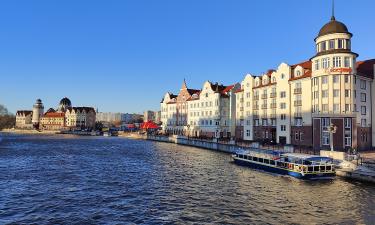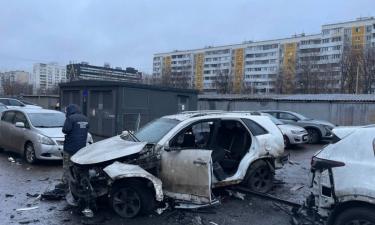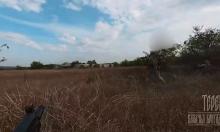Afghanistan's air force tries to get back off ground
The faded green Soviet-era Mi-17 helicopter got 10 meters (yards) off the ground. Then the pilot zoomed upward and banked left, filling the side window with a view of Kabul's mud-brick homes below.

The 15-minute flight was a smooth, uneventful success. But Afghanistan's decimated air force is struggling to get back off the ground, weighed down by a tiny fleet of aging aircraft, a lack of spare parts, and until only six months ago, no international power to show it the way.
The U.S.-NATO-Afghan campaign against a strengthening Taliban insurgency relies heavily on Western airpower to transport troops to remote battlefields and to target militants in bombing runs.
Afghanistan's rebuilt army is shouldering an increasing share of the ground combat. But its air force will take years to develop, dimming the prospect that the country will be able to look after its own security any time soon.
The U.S. military began training the Afghan Air Corps last spring, and Air Force Brig. Gen. Jay H. Lindell said he was excited by the Afghans' "desire, willingness and eagerness to learn."
"I guess what I'm not happy with is the state of where we are, the existing equipment that we do have, the state of the supply system to furnish spare parts for the equipment," Lindell said. "We're going to work to improve that to try to maintain what they do have as long as we can until they can get the new, more modernized equipment."
Afghanistan's air force consists of seven Soviet-era Mi-17 transport helicopters and six Mi-35 gunships, all approaching 20 years old. Of its five transport planes, three are out of service. The average age of its pilots is 43, Lindell said, an experienced group but one with few up-and-coming students.
Though the Air Corps this summer completed its first mission - moving troops into a battlefield landing zone - it is nowhere near big enough to be a reliable complement to the Afghan army.
"The problem we have is that the ground corps are more advanced than the Air Corps. We can't answer all their requests," said Maj. Gen. Dawran Massomi, the top Afghan Air Corps officer, who in the 1980s trained in the Soviet Union to be a cosmonaut. "It's not easy to develop an Air Corps so quickly. We need a lot of money."
The U.S. spent US$30 million (euro21.37 million) to buy 12 refurbished Soviet-era helicopters from the Czech Republic that will double Afghanistan's fleet when they are delivered in December or January. The U.S. has committed US$20 million (euro14.25 million) to purchase spare parts and logistics support for the current fleet, said Lindell.
But Jan, the pilot, said the international community should have invested more into the Air Corps program years ago.
"We have brought this issue up several times, that the international community is not considering the needs of the air force. It's been a big mistake," Jan said. "We had three Air Corps battalions in the past, but now we only have one. In Afghanistan's 34 provinces, with all the security problems we have, one battalion is nothing."
Seth Jones, an analyst with the Washington-based RAND Corp. who visited Afghanistan last month, said he isn't convinced that Afghanistan needs an advanced air force in the short term, given the extraordinary costs of jet fighters.
"As long as the U.S. and other NATO countries are willing to provide air power, I think the focus is and should be on building ground capabilities," Jones said. "Troop transport would be useful if you wanted to get large numbers of soldiers quickly from different theaters. ... I think that's sensible."
The arrival of the refurbished helicopters from the Czech Republic, while good news, will exacerbate the spare parts issue. There are no reliable part providers for the aging choppers, said Maj. Mark D. Campbell, an American adviser to the Air Corps.
Campbell admitted that the U.S. belatedly turned its attention to Afghanistan's air force. "We've been spinning our wheels for years. The emphasis wasn't there," he said.
Underlining its new commitment, the U.S. is building a US$183 million (euro130 million) military airport facility across from Kabul's civilian terminal for exclusive use by Afghan security forces.
Few of Afghanistan's Soviet-built MiG-21 and Su-22 warplanes, some operated by regional warlords in the civil war in the 1990s, have survived. The current fleet of 17 aircraft - two of which are used only for presidential transport - are the survivors of a once sizable force nearly eliminated during two decades of warfare.
Afghanistan had some 300 helicopters in the early 1990s, Jan said.
"Half of them, in fact, were destroyed by the Americans," said the 44-year-old pilot with a laugh, referring to the U.S.-backed 2001 invasion of Afghanistan.
American Col. Rudi R. Kaspar, the head of the Air Corps advisory group, gave a shrug: "They were owned by the Taliban at the time."
Helping Afghanistan buy new jet fighters is not even under discussion, though Massomi said it should have the more advanced air weapons.
"Not to attack other countries, but to defend our own country," he said. "This is the hope of every country."
As recently as 2005, Defense Minister Rahim Wardak was urging the United States to supply him with Apache helicopter gunships and A-10 ground attack planes.
Lindell said the current strategy is to first meet the most critical needs - troop transport, medical evacuations and the capability to help remote areas in humanitarian emergencies. The current plans, made through 2011, don't call for any military jets.
Beyond that, "there are a lot of decisions to be made," Lindell said. "We're not sure if we'll ever get to a jet-equipped Afghan Air Corps, but who knows?"
Subscribe to Pravda.Ru Telegram channel, Facebook, RSS!




